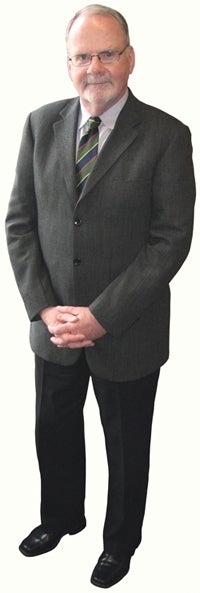Timothy J. Flanagan came to Framingham State College to serve as president in 2006 after a long career as both a college-level teacher and administrator. Today, he oversees a four-year school with an enrollment of more than 5,900. Here, he talks about his background as a sociologist as well as the challenges facing the public higher education sector due to budget cuts.
How did you go from being a criminologist to being an administrator of a college?
It was an interesting transition. As a scholar my research focused on sociological and psychological adjustment of prisoners to incarceration. I found early in my career that every college and academic department has certain administrative tasks and typically most faculty don’t aspire to those roles, but I found them rather interesting. I certainly wasn’t formally trained in any way to be a college president. If I had known then what I know now, I’d go back and take another accounting course because, particularly in times like these, the financial aspects of the management role really become predominant.
What are the skills you learned as sociologist that you can apply now?
People’s behavior is a function of not only their individual personality makeup but also the social roles that they occupy, whether it’s a faculty member or a staff member or a trustee. Social sciences provides a useful analytic framework for looking at organizations like universities. Also, I’m very well served by my first 10 years as a professor. There’s very much a teaching element associated with being a college president because part of my role is to be the cheerleader in chief of the college and be the spokesman of the college. In many ways that’s an educative role.
What is your outlook on the current budget? Are you in a hiring freeze?
During this fiscal year, 2009, which ends June 30, we’ve had three budget cuts, two small ones and one large one — they’ve come to about $2 million. Our state appropriation support is about $24 million each year and we’re looking at an 11.6 percent budget cut starting July 1. We’ve absorbed the first cuts through a series of cost reductions and personnel reductions. In preparation for 2010 we did seven layoffs. We’ve also planned for a 6.5 percent increase in our fees each year for the next five years. That’s higher then what we’d like it to be but we think that’s what will be necessary to offset the decline in state support over the next five years.
Do you expect to see more students from in-state applying here due to the economy?
This is probably the most turbulent year in college admissions that I can ever recall. There’s a lot of speculation that there’ll be a shift from expensive private schools to the public sector. I’ve seen some idiosyncratic evidence of that. Another trend is a shift from four-year schools to two-year community colleges. Those two trends have competing impacts on us. We’ll benefit and we’ll grow as a result of the shift from the privates to the publics, but now we’re competing with the community colleges for students in the first two years.
What are your expectations in terms of federal stimulus funding?
The stimulus funding will help us tremendously in offsetting the cuts we’ve made in fiscal year 2010. It will translate into lower fee increases and we’re also hopeful that we’ll get some of the bricks and mortar stimulus money as well. We’ve got a number of projects that have received high priority. One of them is for an upgrade of our power plant, which is a $5.1 million project. Our planned new science facility has also received a priority rating within the governor’s bond issue, but we’re hoping that it will attract some stimulus money, too.
What’s the hardest lesson that you’ve had to learn as a manager?
I think the most important thing is that you can’t communicate enough. Even if you think you’re doing your best to get the word out and keeping people up to date, you just have to keep working at that, particularly in uncertain times like the ones that we’re dealing with now. You just have to be pushing information out to people constantly.
Watch as Flanagan explains what he sees as the biggest challenge facing public higher education today.

